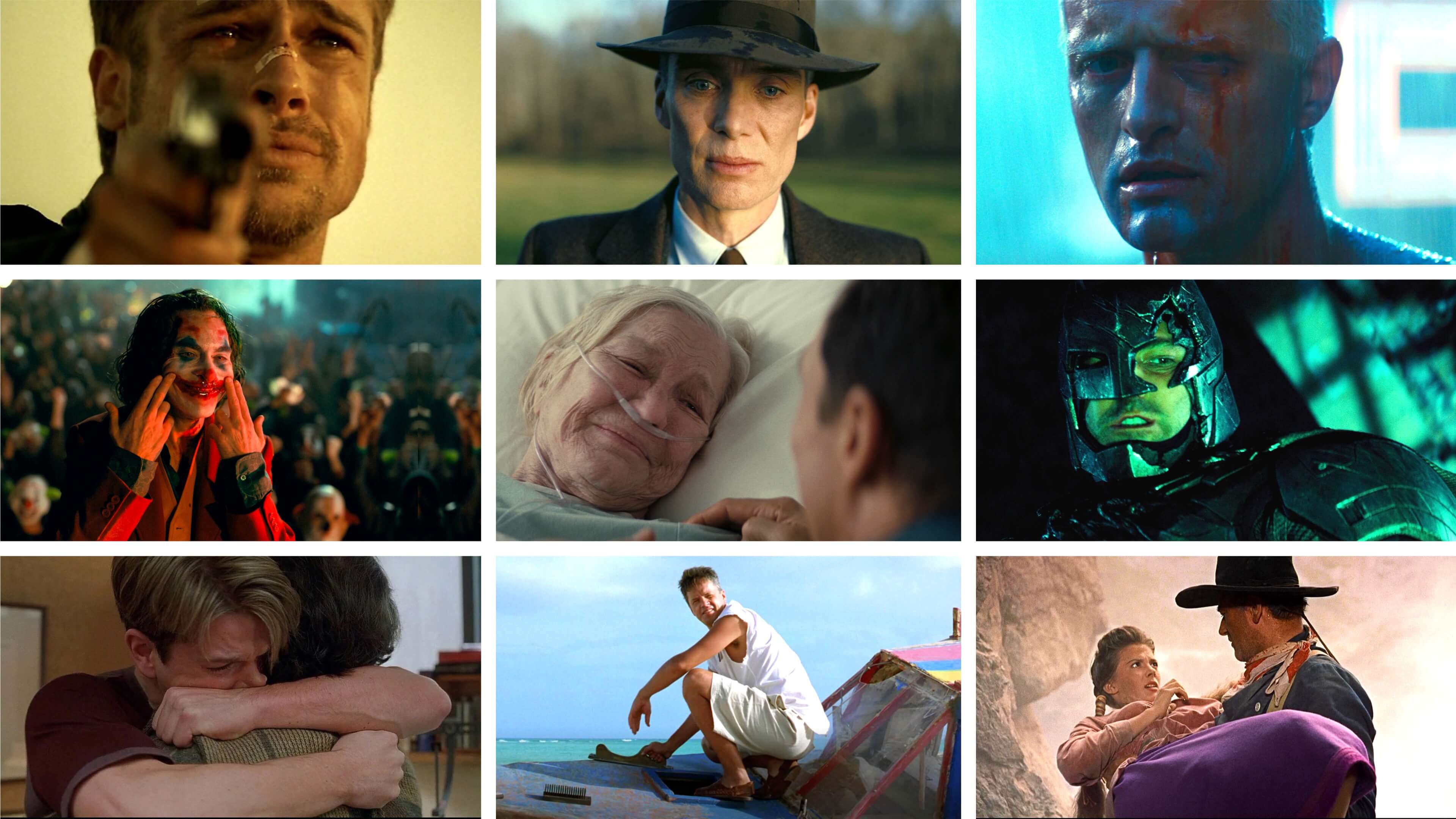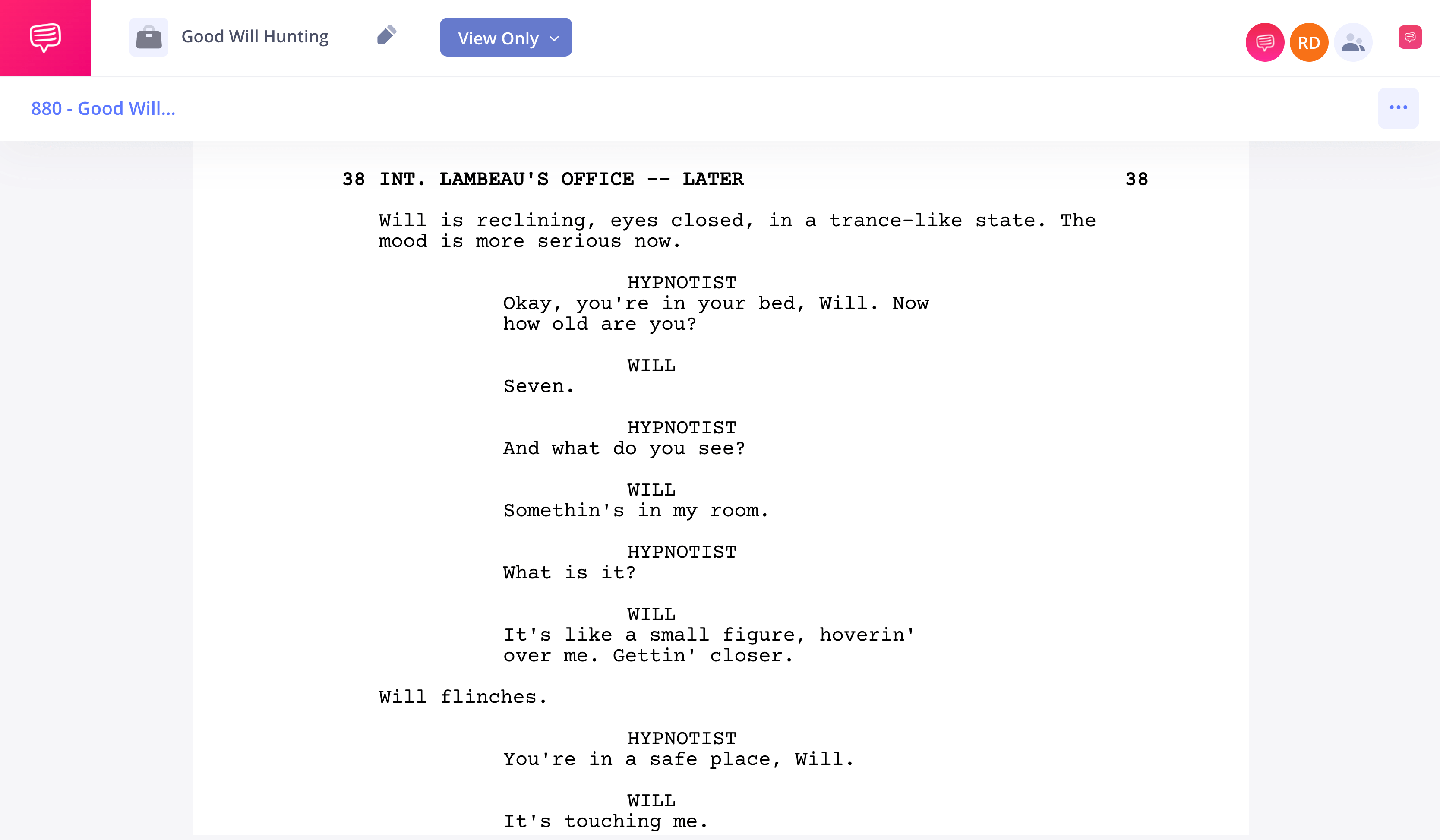When was the last time you shed a tear while watching a film? Can you recall the specific scene? Many describe this as a “good cry.” How can a cry be good? Many people have pent-up emotions from various events in life. Art can evoke an emotional release of these emotions, also known as catharsis. The experience of catharsis can be overwhelmingly emotional. Films that create catharsis can move an audience to tears while also leaving them completely satisfied. What is catharsis, and how is this possible? Let’s explore the catharsis definition and how it applies to storytelling.
What is Catharsis?
Definition in literature and storytelling
Catharsis is a term widely used throughout art styles, and its origins date as far back as art itself. What is the meaning of catharsis? Let’s define catharsis and analyze how its origins have led to the catharsis definition we have today, including how to properly use catharsis in a sentence when discussing storytelling.
CATHARSIS DEFINITION
What is catharsis?
Catharsis is the release and relief of strong or repressed emotions. The term “catharsis” derives from the Greek word katharsis meaning “purification” or “cleansing.” In the realm of psychology, the American Psychological Association defines catharsis as "the discharge of effects connected to traumatic events that had previously been repressed by bringing these events back into consciousness and re-experiencing them."
As it applies to film and art, emotional catharsis can be the result of the emotional effect of a tragic drama. Heroes in cathartic stories often experience a cathartic release that leads to a restoration.
What is catharsis composed of in storytelling?
- Emotional build up
- Relatable experiences
- Connection to characters
- Moving performances
Understanding Catharsis: Meaning and Impact in Storytelling
History of emotional catharsis
What is the meaning of catharsis? To answer this question, we must take a look back. Understanding the catharsis meaning—a concept as old as the Ancient Greeks—provides valuable insight into its role in storytelling. The Ancient Greek philosopher Aristotle described catharsis as the emotional purge of fear and pity aroused by tragedy—an early attempt to answer the question, what does catharsis mean, in the context of art and drama.
The term was then adopted by psychoanalysts Sigmund Freud and Josef Bruer. For them, catharsis was a therapeutic technique used to reduce a psychological complex by recalling it to conscious awareness and allowing it to be expressed.
Today, however, the term has become more synonymous with art. People often describe art that evokes emotion as cathartic. Music, plays, novels, and films can have cathartic components that tie into the psychology of the audience. Art can elicit an emotional cathartic release in an audience, often evoking feelings and memories by connecting to their personal experiences. This emotional power leads many to ask, what does catharsis mean when it comes to audience connection?
Catharsis in Literature: Definition, Meaning, and Examples
The many faces of catharsis
The catharsis definition in literature isn’t a one-size-fits-all concept. Different stories elicit distinct emotional responses, each shaping how we process and release feelings. Whether it’s the sorrow of a tragic downfall, the triumph of an underdog’s victory, the healing power of redemption, or the adrenaline-fueled relief of surviving a horror film, catharsis takes many forms. By understanding these variations and asking ‘what does catharsis mean’ in each context, we can appreciate how storytelling taps into our deepest emotions, offering not just entertainment but a meaningful emotional journey.
But not all catharsis is the same. Different stories evoke different types of emotional release:
- Tragic Catharsis (Fear & Pity) – Found in tragedies like Hamlet and Romeo and Juliet, where the audience experiences deep sorrow yet emotional release.
- Victorious Catharsis (Relief & Triumph) – Seen in underdog stories like Rocky, where struggle leads to a cathartic victory.
- Redemptive Catharsis (Forgiveness & Healing) – A character releases deep-seated emotions and gains peace, just like in Good Will Hunting.
- Horror Catharsis (Survival & Release) – Horror films like Get Out build tension and fear before offering relief in the final moments.
From the heartbreak of tragedy to the exhilaration of triumph, catharsis manifests in diverse ways, each revealing a different catharsis meaning that reflects the many facets of human emotion. Whether we find release through fear, sorrow, victory, or redemption, these experiences remind us of the power of storytelling to move, challenge, and heal us. Each form of catharsis serves a purpose, providing audiences with a space to process emotions and connect with stories on a deeply personal level.
Related Posts
Catharsis in Art and Literature
How emotional release shapes stories
The vast majority of artists want to make their audience feel something. Thus, catharsis is everywhere, in all kinds of art forms. —and it helps to understand how to use catharsis in a sentence when discussing these emotional effects. Let’s look at a few examples of catharsis in literature and beyond.
How Shakespeare uses catharsis to create emotional moments
We all know the general plotline of one of Shakespeare’s most famous plays, Romeo and Juliet. Why is that? Because its cathartic climax so powerfully captures the catharsis meaning through emotional tragedy.
Juliet fakes her death, and when Romeo finds her, he believes she’s dead, so he poisons himself, resulting in Juliet waking up and doing the same.
It’s tragedy on tragedy on tragedy, and the avoidability of it all makes it all the more heartbreaking.
Catharsis Example in Death of a Salesman
Not all catharsis has to be massively depressing, but we have to include Death of a Salesman. Arthur Miller’s play ends with, well, the death of the titular salesman, and it is devastatingly cathartic. Take the final soliloquy from the salesman, Willy Loman:
“Now when you kick off, boy, I want a seventy-yard boot, and get right down the field under the ball, and when you hit, hit low and hit hard, because it’s important, boy. (He swings around and faces the audience.) There’s all kinds of important people in the stands, and the first thing you know... (Suddenly realizing he is alone.) Ben! Ben, where do I... ? (He makes a sudden movement of search.) Ben, how do I... ?”
Willy is talking to his dead brother, Ben, having fully become untethered from reality. The final speech from Willy is desperate and, as Miller notes, elegiac, a poignant end to Willy’s arc.
Catharsis in Citizen Kane
We may not be rooting for Charles Kane in Orson Welles’s masterpiece, Citizen Kane. But by the end of the film, his demise is certainly cathartic. He has worked all his life to amass wealth and power, but in the end, he passes away, plagued with loneliness and a longing for loved ones and simpler times.
Kane is a great example of a catharsis being created even with an unlikable character.
Related Posts
Catharsis Across Artistic Media
How different art forms evoke emotion
Various art forms can create catharsis. Music, novels, and plays can be incredibly emotional. However, there are specific qualities to the medium of film that allow it to effectively elicit an emotional response in an audience.
However, catharsis isn’t exclusive to film. Different storytelling mediums evoke catharsis in unique ways:
- Literature: Novels like The Great Gatsby build catharsis through internal monologues, allowing readers to intimately experience a character’s emotional journey.
- Theater: Plays like Death of a Salesman rely on live performances, monologues, and audience immersion to create powerful emotional releases.
- Video Games: Interactive storytelling in games like The Last of Us allows players to experience catharsis through direct agency, making emotional moments more personal.
- Film: Uses cinematography, music, and editing to compress time and magnify emotional story beats, making catharsis more immediate.
Each artistic medium offers a distinct path to catharsis, shaped by its unique storytelling tools and audience engagement, ultimately revealing the catharsis meaning within that particular form. Whether through the introspective depth of literature, the raw immediacy of theater, the interactive immersion of video games, or the sensory power of film, catharsis remains a fundamental part of the human experience.
Defining Cathartic Moments in Cinema
Understanding catharsis in film
The first quality is the film’s ability to condense time. Through editing, a film can allow weeks, months, or even years to unfold before us over a matter of seconds. When done effectively, films can connect audiences to characters within a short period.
When an audience connects to a character, everything that the character experiences becomes much more emotional. The best technique to do this is a montage. This technique condenses time and events to create a narrative sequence. This montage from Pixar’s Up, connects us to these characters, only to have tragedy befall them.
Up • Catharsis Example
What is so incredible about this montage is how it elicits so much emotion in the first ten minutes of the film. The reason is that the emotions of love and grief are a part of the human experience. Humans have an innate connection to both of these emotions. The directors use both to build our emotions up and release them at an incredibly cathartic moment.
Film is also an incredibly visual medium. It allows us to see characters experience emotions. Sure, plays are visual as well, but film utilizes the close-up shot. This allows us to see the details of a character's emotions, further eliciting an emotional response in us.
In Good Will Hunting, Will has a cathartic moment as he releases his repressed emotions to his friend and psychologist. He builds up emotions by establishing Will’s abusive childhood and the effects of it on his life. Take a look at this catharsis example as well as the brilliant performance and execution.Good Will Hunting • Emotional Catharsis Example
The audience's ability to visually witness his cathartic moment up close through filmmaking creates a cathartic moment for Will and the audience.
Naturally, for this scene to hit the emotional peak it does, we need to recognize everything that leads up to the moment. Remember, the greater the build-up and repression, the greater the release.Related Posts
How to Create Catharsis in a Story
Defining emotional release in writing
For writers and filmmakers, crafting a story with a truly cathartic impact requires careful structure and emotional depth. Expressive writing plays a crucial role in this process, allowing storytellers to convey deep emotions authentically and compellingly.
Catharsis isn’t just about an emotional outburst—it’s about taking the audience on a journey of buildup, release, and transformation. By following a framework that gradually intensifies emotional tension and delivers a meaningful resolution, storytellers can create moments that resonate deeply. Whether it’s a character confronting long-buried pain, achieving long-sought triumph, or finding peace, a well-executed catharsis leaves a lasting impression—and knowing how to use catharsis in a sentence reinforces that impact in your storytelling.
If you’re a writer or filmmaker, how can you ensure your story delivers a cathartic impact? Let's take a look at this framework from Good Will Hunting:
1. Establish Emotional Repression – Show a character avoiding or suppressing emotions (Will Hunting refuses therapy). In this scene, Will begins to reveal a traumatic memory under hypnosis but quickly derails the session with humor and sarcasm. His sudden shift to mocking and singing shows how he deflects pain and avoids vulnerability, using wit to suppress deeper emotions.
We imported the Good Will Hunting script to StudioBinder's Screenwriting Software to see how this scene plays out in the screenplay.Hypnosis scene from Good Will Hunting
2. Crescendo of Emotion – Gradually build emotional tension through rising conflict and stakes until a cathartic trigger forces release.
Sean calmly dismantles Will’s emotional armor without confrontation. He doesn’t argue or psychoanalyze—he just tells the truth. Sean acknowledges Will’s intelligence but points out that book knowledge means nothing without life experience. He calls out Will’s fear of vulnerability, love, and loss.
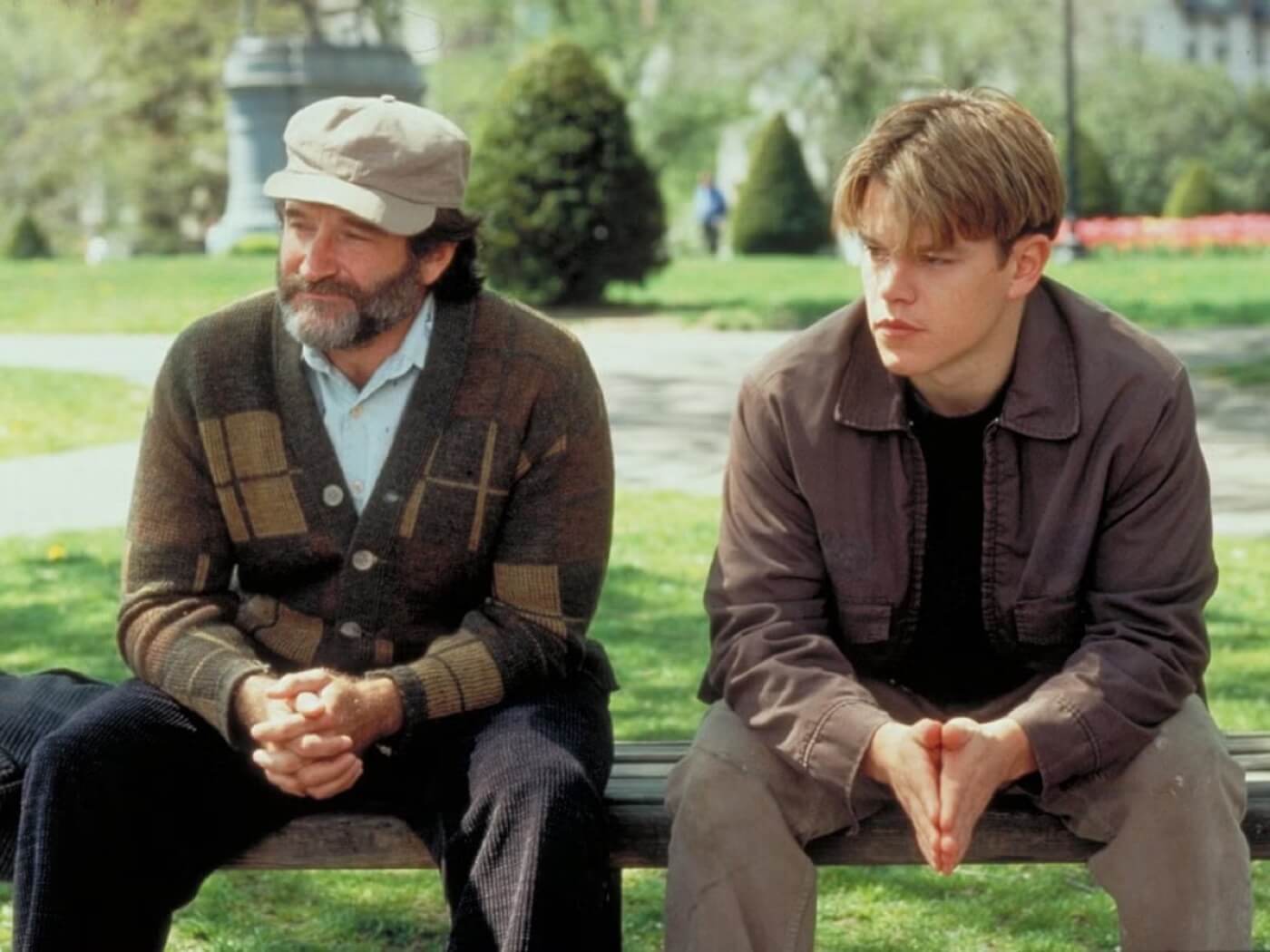
Parkbench scene from Good Will Hunting
“You’re just a kid… You’ve never held your best friend’s head in your lap and watched him gasp his last breath, looking to you for help.”
This is where Will starts to feel seen—and it terrifies him. It’s a crucial tension-building moment that sets the emotional dominoes in motion, ultimately leading to his breakdown in the final session.
3. Execute the Catharsis Moment – The emotional breaking point. Will’s emotional armor cracks in subtle moments—flashes of anger, deflection, and discomfort—each revealing glimpses of buried pain. As the story progresses, his relationships, especially with Sean, challenge his defenses.
The tension escalates through confrontation and vulnerability, culminating in a quiet but powerful climax. When Sean softly repeats, “It’s not your fault,” Will at first resists, deflects, and jokes. But the repetition breaks through his walls, triggering an uncontrollable release of emotion. The moment is cathartic, earned through the steady build of emotional pressure and deepening trust.
Good Will Hunting 'It's Not Your Fault Scene' • Read Full Scene
4. Show the Aftermath – Demonstrate how the character has changed (Will is finally ready to open up and move forward). Will finally expresses genuine gratitude to Sean, leaving a simple but powerful note.
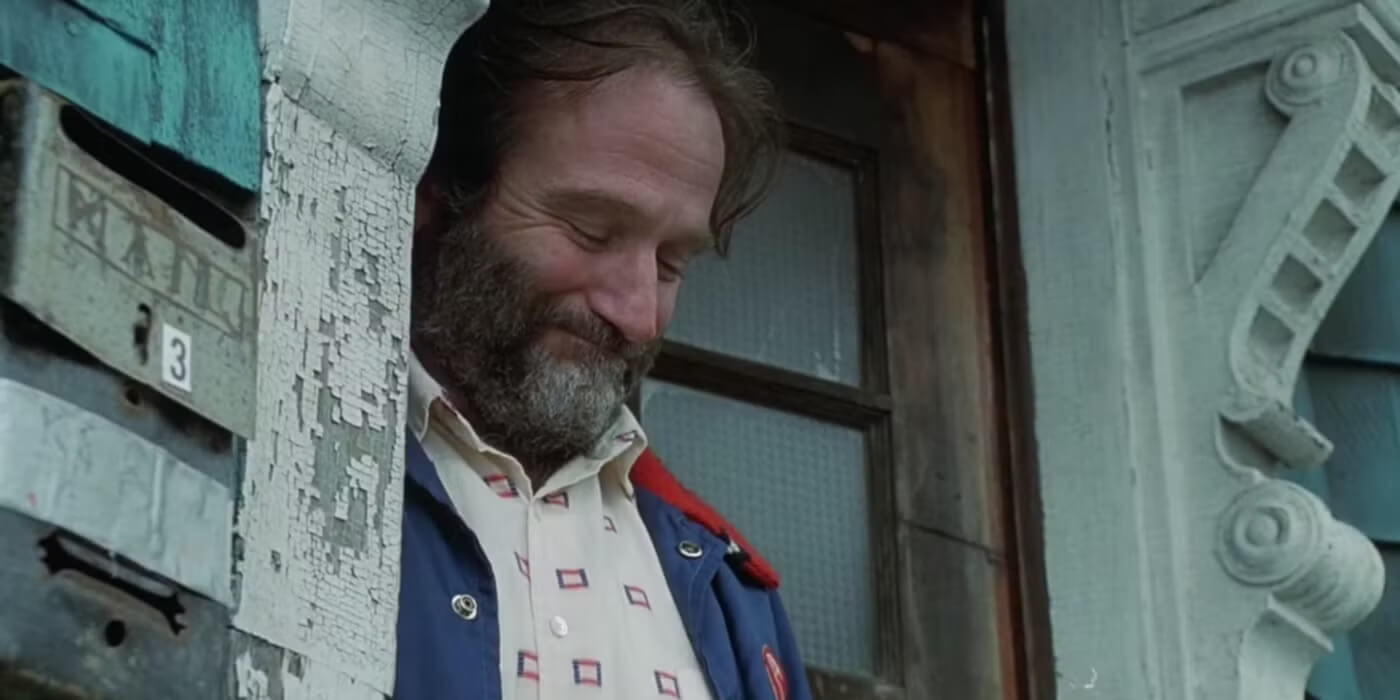
Sean finds Will’s note in Good Will Hunting
“Sorry I had to go see about a girl.” It’s his way of saying thank you—for the therapy, for the belief, and for the care that broke through his walls. This act shows he’s no longer hiding behind intellect or fear. Instead of staying in his comfort zone, Will chooses the unknown—he chooses love. By deciding to drive to California to reunite with Skylar, he shows he’s ready to live a fuller, more vulnerable life. It’s a quiet, decisive moment that proves his transformation is real.
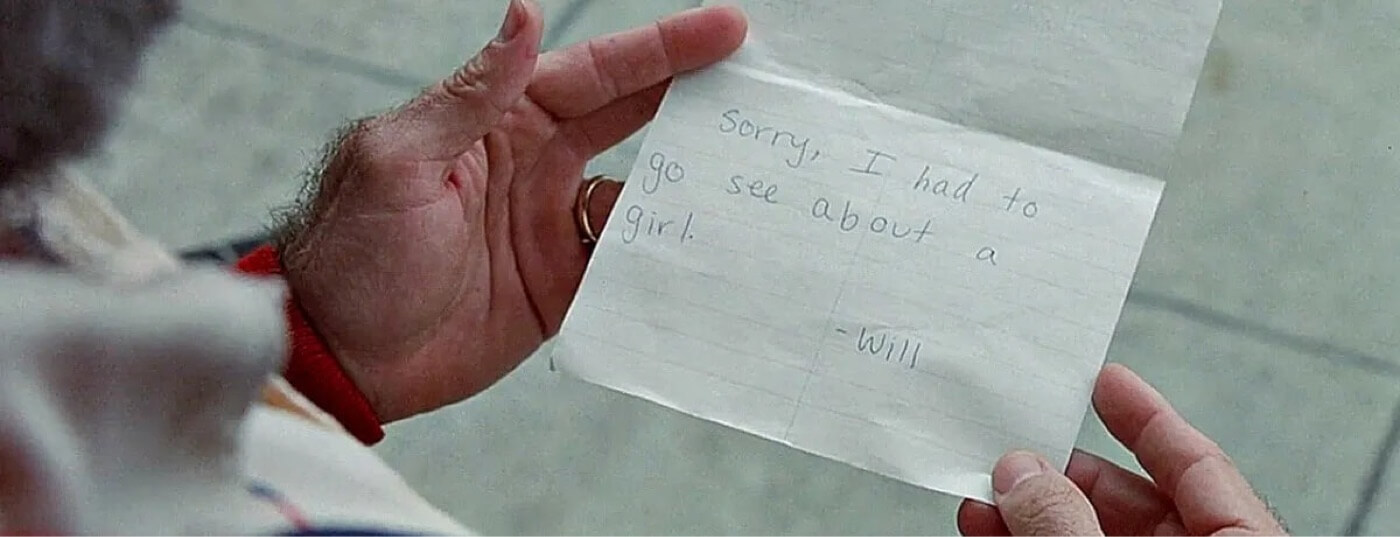
Will’s note to Sean in Good Will Hunting
A decisive cathartic moment doesn’t happen by chance—it’s the result of careful storytelling that builds emotional tension, delivers a poignant trigger, and shows meaningful transformation.
By understanding and applying this framework, writers and filmmakers can craft stories that don’t just entertain but deeply move their audiences. In the end, the most impactful stories are those that give us a space to feel, release, and ultimately grow—illuminating the catharsis meaning along with the characters on screen or page.
UP NEXT
The Purpose of Conflict in Story
Catharsis—the emotional release that makes a film unforgettable—is almost always earned through conflict. The deeper the struggle, especially internal struggle, the greater the payoff. While some stories can function without a strong emotional release, none can function without conflict. It’s the engine that drives character, plot, and ultimately, meaning. In the next article, we explore what conflict truly is, and why it’s essential to every story that hopes to resonate.
